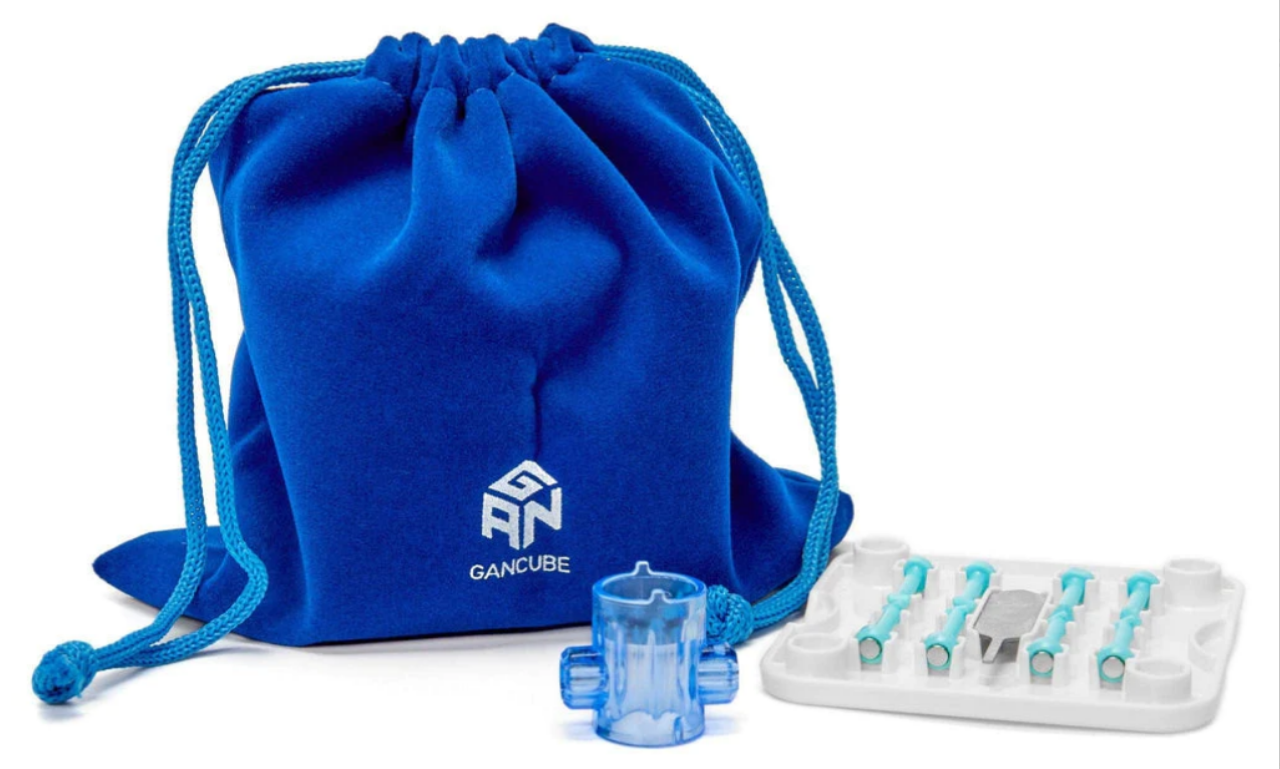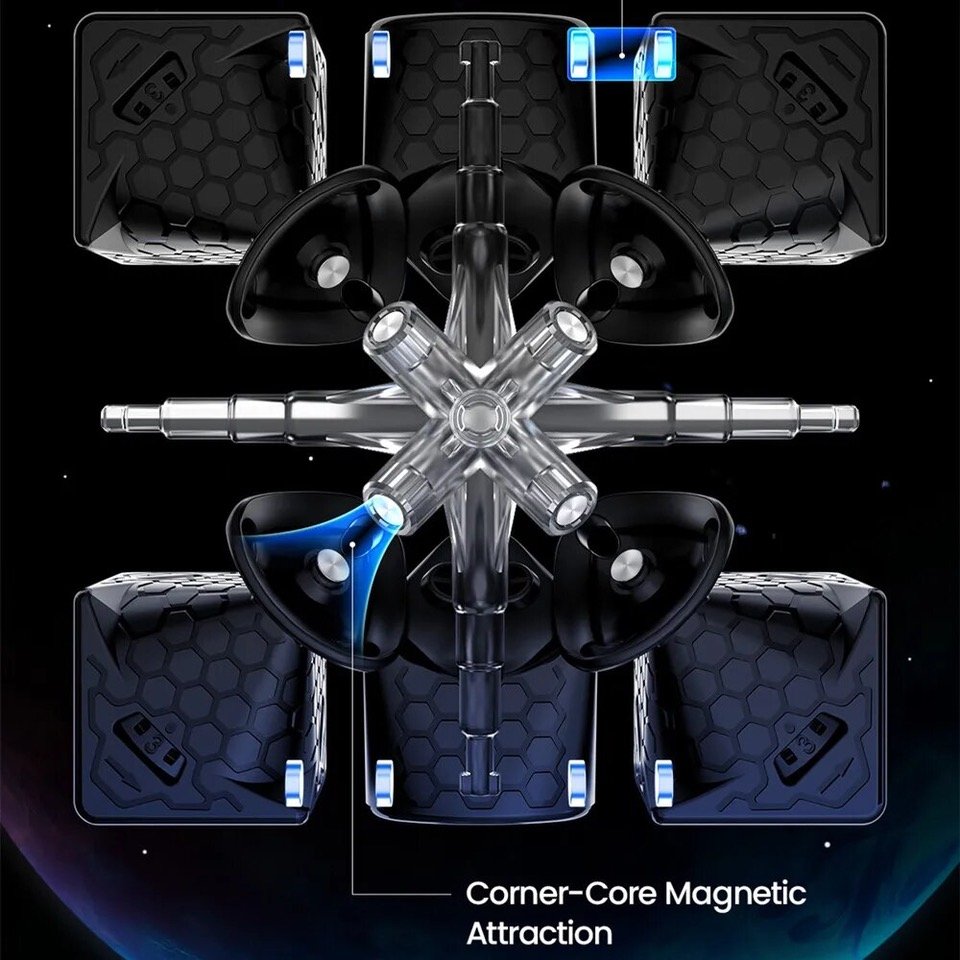Good Design: GAN14 Maglev Speed Cube
Humans are obsessed with speed. In the 2020 Tokyo Olympic Games, 3 billion people watched athletes compete in events, a large percentage of which were focused on speed [1]. Modern innovations in transportation, data transfer, and manufacturing processes often are concerned with speed. Even during the day-to-day, you probably are worried about how fast your car can go when you are running late for work, or how fast the microwave will cook your popcorn when you’re eager to cozy up with a bowl for a late-night movie. This need for speed can be found everywhere.
A new but fast-growing community has sprung up in the last few decades, and they’re focused on… you guessed it: speed. The goal: solve a Rubik’s cube as fast as possible. This competitive hobby began to gain traction with the World Rubik’s Games Championship 2003 when Dan Knights won with an average of 20.00 seconds. As of June 2023, the world record for a single solve is only an impressive 3.13 seconds [2].
Due to growing demand from both amateurs and pros, speed-cubing technology has developed quickly. At the forefront of this development is GANCube, a speed-cubing company with multiple world-record-setting speed cubes. The flagship of the company, the GAN14 Maglev, is equipped with many subtle design features that make it one of the best in the world in speed, and durability. Most notable, however, are the unique customizability options that provide a tailor-fit user experience.
How do Speed Cubes Work?
Most Rubik’s cubes are snap-in pieces held together by a core. Speed cubes refer to cubes for amateur professionals that are designed to reduce friction between pieces and naturally correct when the sides aren’t rotated accurately to enable the user to turn the faces of the cube at a much faster rate than a standard Rubik’s cube.
Customizability
The GAN14 Maglev sports several customization options that allow the user to fine-tune the speed cube to their preferred tension, turning difficulty, stability, and elasticity. Because of the customizable nature of this cube, it has 1296 possible unique configurations to ensure that it feels just right under the hands of a wide variety of solvers and enthusiasts.
The magnets within the GAN14. Image from https://www.thecubicle.com
The first distinctive speed feature is hidden and unexpected but adds a lot of value. Similar to a few other high-end speed cubes, the GAN14 Maglev is equipped with small high-strength magnets located on the center, edge, and corner pieces to prevent over, or under-turning during the solving process. This is vital at high turning speeds because slightly under or over-turning a face on the cube can lead to either lock-up while rotating a perpendicular face or, in more extreme cases, the explosion of the cube.
What makes this cube stand out is the switches on each piece which allow you to move the magnet farther or closer to the center. This enables the user to adjust the magnitude of the torque caused by the magnets during cube rotation. There are also magnet pairs on each side which repel each other causing a decrease in the frictional forces during cube turning. And if you haven’t already heard enough about magnets, you can switch out the interior corner-piece magnets for stronger ones to increase or decrease the stability.
Image from https://speedcubeshop.com/products/gan-14-3x3-magnetic-maglev
The final option for customization with this cube is also hidden. Beneath the center caps on all 6 sides of this cube are two tunable gears that control elasticity and tension. The tuning is done using the small clear plastic fire-hydrant-shaped wrench shown in the image above. Some speedcubers prefer to have less tension and more elasticity so that they can make less precise turns without the cube locking up. Some speedcubers with more precise turning styles don’t like to sacrifice stability and opt for higher tension and lower elasticity.
For some who haven’t tried speed-cubing before, the features highlighted in this section may seem too technical or tedious, but there is an overarching theme in this design. The designers of the GAN14 Maglev answered the question, “How can we tailor our design so that it fits the preferences of the most people possible?”. Everyone has different preferences, and those preferences affect the experience people have when interacting with or using products created using principles of mechanical design. In this example, the designers did an amazing job of empathizing with the community of people who would be using their product. In short, empathy is a crucial part of good design.
Speed Feature
A close up of the GAN14, showing the hex pattern on the surface of the cube. Image from https://www.gancube.com/es/gan14maglev/
A distinguishing feature of the interior of the cube is the raised hex pattern on the friction surfaces of the pieces (see image above). Often, speed cubes will have some type of lubricant on them to make turns buttery. Speedcubers can very easily over-lubricate the cube leading to a gummy or sludgy feeling (I’ve done it before and it’s not fun), but this hex pattern allows excess lubricant to disappear into the space between the hexes guaranteeing a less gummy feeling cube even if lubricant application isn’t perfect.
Durability Features
If you take a close look at the image below, this is what happens when using a speed cube with stickers. They peel, they scrape off, and they chip. Fortunately, this model comes with bright-colored plastic tiles as an alternative to stickers. For those who don’t know the algorithms required to solve a Rubik’s cube, this unfortunately means you won’t be able to peel off the stickers and put them back on to make it look like you solved it. However, this does mean that you won’t ever need to replace the stickers on the GAN14 Maglev.
The peeling stickers of a normal Rubik’s cube. Image from reddit.com
The accessory bag could be easily overlooked but is indispensable when it comes to keeping the cube from breaking or getting scratched. In Addition to providing protection, the included washable felt bag is also an easy way to store the cube and prevent dust and grit from affecting the buttery smooth feel.
Conclusion
The GAN14 Maglev is a prime example of empathetic and “one size fits all” design. Whether you enjoy speed-cubing or not, the design principles still hold. The designers at GANCube did an exceptional job of providing a wide variety of customizations while also providing durability and speed. To be successful designers, we should consider how people with a variety of preferences might use our designs differently. Only then can we ensure that our design will have the greatest impact possible.
Good design isn’t only about technical expertise: it’s about creating with people in mind.
REFERENCES:
[1] https://olympics.com/ioc/news/olympic-games-tokyo-2020-watched-by-more-than-3-billion-people
[2] https://www.worldcubeassociation.org/
To cite this article:
Godfrey, William. “Good Design: GAN14 Maglev Speed Cube.” The BYU Design Review, 20 Oct. 2023, https://www.designreview.byu.edu/collections/good-design-gan14-maglev-speed-cube.









